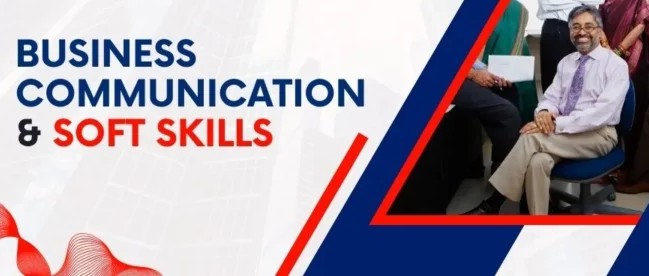- Teacher: Dr.Roshna Varghese
- Teacher: Dr. Sajimon Abraham
- Teacher: MS. VARSHA BABU
Course Name | Business Communication and Soft skills | |||||
Type of Course | Core | |||||
Course Code | MBM21C03 | |||||
Course Summary & Justification | This course enables the students to: A. To analyse and demonstrate writing and speaking processes through invention, organisation, drafting, revision, editing, and presentation. B. To understand the importance of specifying audience and purpose and to select appropriate communication choices. C. To interpret and appropriately apply modes of expression, i.e., descriptive, expositive, Narrative, scientific, and self-expressive, in written, visual, and oral Communication D. To participate effectively in groups with emphasis on listening, critical and reflective thinking and responding. E. To develop the ability to research and write a documented paper and/or to give an oral presentation. | |||||
Semester | 1 | Credits | 3 | |||
Total Student Learning Time (SLT) | Learning Approach | Lecture | Tutorial | Practical | Others | Total Learning Hours |
Authentic learning Collaborative learning Case based learning | 45 | 5 | - | 10 | 60 | |
Pre-requisite | NIL As per the requirement of the course | |||||
Others- Library, field work, seminar and assignment preparations, test, journal, discussion etc. | ||||||
COURSE OUTCOMES (CO)
CO No. | Expected Course Outcome Upon completion of this course, students will be able to; | Learning Domains | PSO No. |
1 | Apply business communication strategies and principles to prepare effectivecommunicationfor domesticandinternational business situations. | A | 6, 7 |
2 | Participate in team activities that lead to the development of collaborative work skills and leadership skills | C, S | 8, 9 |
3 | Select appropriate organisational formats and channels used in developing and presenting business messages | E | 6,7 |
4 | Communicate via electronic mail, Internet, and other technologies and deliver an effective oral business presentation | An | 6,7 |
*Remember (R), Understand (U), Apply (A), Analyse (An), Evaluate (E), Create (C), Skill (S), Interest (I) and Appreciation (Ap) | |||
COURSE CONTENT
Hrs | CO.No. | ||
Unit 1 | 7 Hrs | ||
1.1 | Importance of Communication in business -Types of Business Communication-Methods and media of Communication | 2 | 1 |
1.2 | Principles of Business Communication, Process of Business Communication | 2 | 1, 3 |
1.3 | Barriers to poor Organisational Communication- Strategies for improving Business Communication effectiveness. | 3 | 1,3,4 |
Unit 2 | 9Hrs | ||
2.1 | Types of Organisational Communication | 2 | 1,3, 4 |
2.2 | Communication for interpersonal influences | 2 | 3,4 |
2.3 | Effective Leadership Communication | 2 | 2, 3 |
2.4 | Cross Culture Communication | 3 | 4 |
Unit 3 | 12Hrs | ||
3.1 | Verbal and non-verbal Communication in business | 2 | 1,2 |
3.2 | Public Speaking Skills | 2 | 2 |
3.3 | Business presentations –Role of audio visual aids and computers in oral presentations | 2 | 2,3 |
3.4 | Interviewing- Art of negotiation & Listening skills | 2 | 4 |
3.5 | Mannerisms | 2 | 2 |
3.6 | Body Language, postures and gestures, handshakes, gaze, smiles, hand movements,voicemodulation, Eyecontact,useofexpression | 2 | 2,3 |
Unit 4 | 12 Hrs | ||
4.1 | Written communication- Writing Process | 2 | 1, 2, 3 |
4.2 | Writing Business Letters – Formats and Styles of business letters | 2 | 1, 2, 3 |
4.3 | Types of business letters -Request, Enquiry, Placing Order, Instruction, Action, Complaint, Adjustment, Sales,Reference,Good News&BadNews,Acknowledgement. | 2 | 1, 2, 3 |
4.4 | Memoranda- Directives and instructions- Notices -Reports | 2 | 1, 2, 3 |
4.5 | Conducting meetings-Procedure, Agenda - Proposals -Minutes -Professional papers - Agreement documents -Press releases | 2 | 2,3 |
4.6 | Preparation of resumes | 2 | 4 |
Unit 5 | 5 Hrs | ||
5.1 | Group discussion | 2 | 3 |
5.2 | Drafting speech | 2 | 3 |
5.3 | TimeManagement | 1 | 2,3 |
Teaching and Learning Approach | Classroom Procedure (Mode of transaction) Authentic learning, case-based learning, collaborative learning, seminar, group activities.
| ||||||||||||||||||||||||||||||||
Assessment Types | Mode of Assessment · Continuous Assessment (CA) o Tests o Seminar Presentation – a theme is to be discussed and identified to prepare a paper and present in the seminar o Assignments · End Semester examination |
REFERENCES
1. Boyee Courtland L and Thrill John V. Business Communication Today, Prentice Hall International.
2. Atkinson, Business Writing & Procedures, Reynolds American Book Co
3. Mary Ellen Guffey, Business Communication: Process and Product, 5e, South- Western
Thomson Publishing, Mason, OH, 2005
4. Namita Gopal, Business Communication, New Age International Publishers, New Delhi,
2009
5. Penrose and Rasberry, Business Communication for Managers: An advanced approach, 5e, South-Western College Pub, 2007
6. Asha Kaul, Business Communication, Prentice Hall of India, New Delhi, 2007
7. Harvard Business Essentials: Business Communication, Harvard Business School Publishing 2003

- Teacher: Dr Johney Johnson
- Teacher: Dr Tijo Thomas .